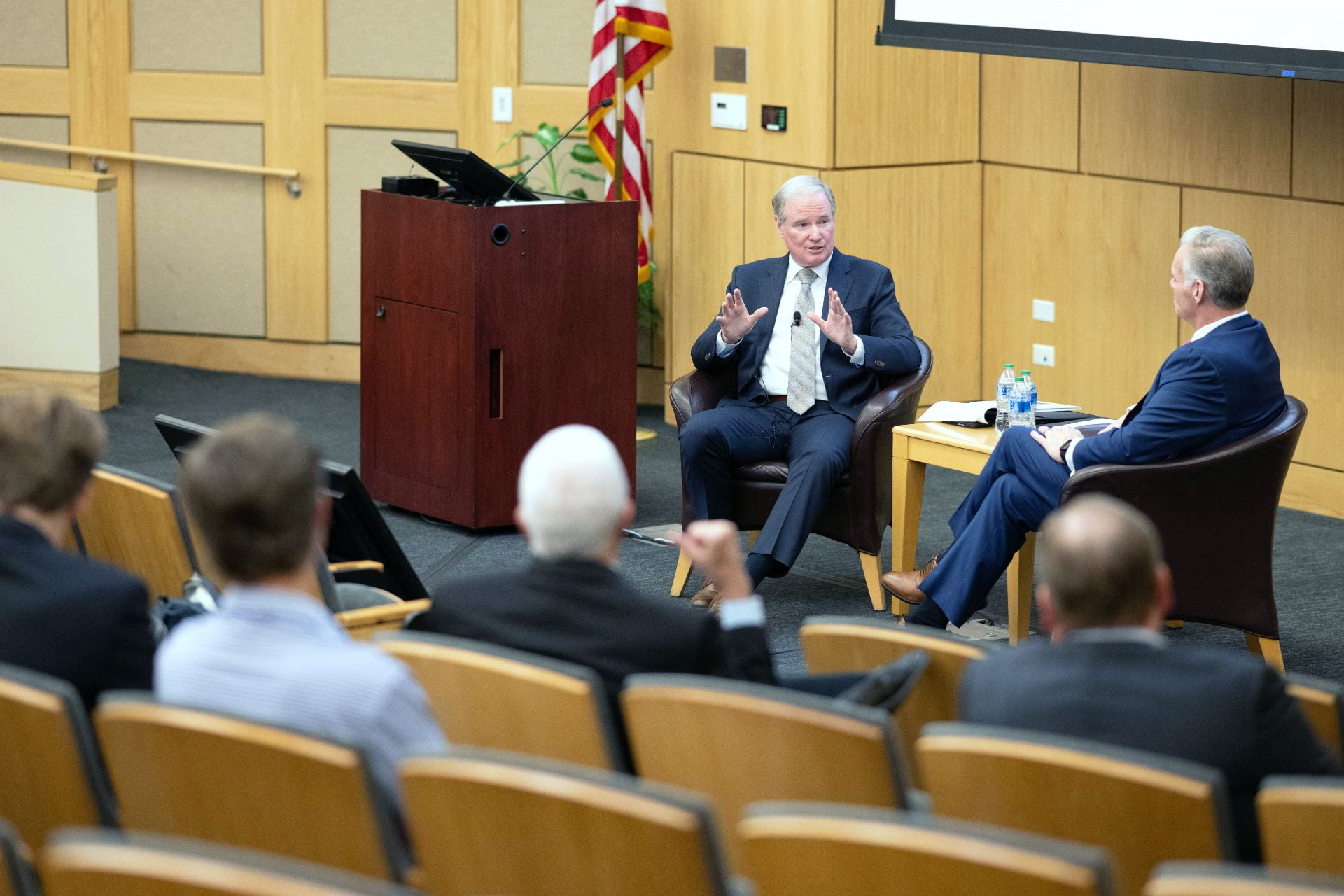When there is a dash for cash, where do bond traders turn? During a COVID bond market meltdown period, it was good old-fashioned conservative insurance companies to the rescue. Finance Professor Alex Zhou of SMU Cox and his coauthors wanted to study what happened to bond market liquidity during the time of COVID, when fixed income markets were essentially dysfunctional. Looking at the really big picture, they show that stable funders are where it’s at. “We don’t think about them, but when you need them—you need them,” Zhou states.
Their work illustrates the “value of value investors during times of stress.” The study used data from the National Association of Insurance Commissioners, tracking every bond purchase or sale by U.S. insurance companies and their counterparties (or dealers) during 2017 to 2020 The sample comprised nearly one million bond trades.
Who’s buying?
Most bonds trade over the counter with dealers acting as intermediaries. People wanted to know who was buying when everyone else sells, says Zhou. Most believe that dealers, the intermediaries, were facilitating buying and selling and acting as a liquidity provider. In fact, they were risk averse and had balance sheet constraints, so they were not a significant enough force to stop a market meltdown. Dealers are actually buyers of “first resort,” acting to smooth short-term temporal imbalances, the authors note. “[They have] neither the capital nor the inclination to stop market meltdowns.”
Instead, the buyers of “last resort” are value investors, whose long-term investment horizons allow them to step in and buy when illiquidity and temporary dislocations in risky asset prices present investment opportunities. In the bond markets, insurance companies can be one of the buyers of “last resort.” Insurance companies are the largest domestic investors in corporate bonds, holding about 30% of the outstanding market at the end of 2019. According to data from S&P Global Market Intelligence, U.S. and foreign corporations had about $9 trillion of corporate bonds outstanding in the U.S. corporate bond market by the end of 2019. Of this market, U.S. insurers held about $3 trillion.
Indeed, the researchers found that insurance companies played an important stabilizing role in the March 6 to March 19, 2020 crisis study period. Corporate bond dealers’ inventories during the crisis period fell by about $5 billion dollars, and insurers scooped up half of this.
Additionally, the study shows that insurance companies traded more in bonds that experienced higher dealer intermediation, In fact, relationships were strengthened during the crisis period. In contrast to existing studies that highlight the value of the insurer-dealer relationship for insurance firms, the authors focus on the opposite end of the relationship, studying how dealers benefit from their relations with investors. Their results suggest that in addition to repeat business, trading support during liquidity crises can serve as another important channel through which dealers benefit from their relationships. That is, relationships matter and were illuminated further in the context of the crisis.
The authors also note that insurers’ trading activities were highly concentrated in bonds facing mutual fund selloffs. Insurers’ purchases—but not their sales —were definitely connected to bonds owned by mutual funds during the crisis period.
Importantly, the paper provides new insights about financial fragility risks in bond markets. A large body of literature studies the liquidity transformation happening from bond mutual funds, and its potential risks to financial stability. This is further highlighted by the selloff event in the corporate bond market. The authors add to the literature stream with fresh insights that can inform future policy.
Future concerns
Zhou wonders what policy measures and technology can facilitate or at least not hinder liquidity provision in the bond market. Of late, the treasury bond markets have been suffering from liquidity deterioration in the past year or two as interest rates have risen. New and different patterns of trading are emerging.
The bond market is dominated by institutional traders such as insurance companies, pension funds, mutual funds and endowments. After the insurers, holding roughly 30% of the bond market, the next most stable investor type was pension funds, with 10-15% market share. Mutual funds are roughly 20%. After that swathe, banks, foreign investors and wealthy investors own the bond market. Thus, the bond market has unique institutional features and it lacks the transparency of the stock market.
In a related paper, Zhou is focusing on liquidity issues in bond markets, but in a very different way. His value paper focuses on how the investor base impacts the liquidity in the bond market. In a more recent portfolio trading paper, he looks at how a different emerging style of trading can impact liquidity. Zhou’s work illuminates the under-appreciated value of liquidity providers of last resort and emerging channels as markets evolve.
The paper “The Value of Value Investors” by Xing (Alex) Zhou of Cox School of Business, Southern Methodist University, Maureen O’Hara of Cornell University and Andreas C. Rapp, Federal Reserve Board of Governors is under review and revision for publication at Review of Financial Studies. A second paper “Bond Market Illiquidity: Is Portfolio Trading the Solution?” is under revision for publication at Journal of Finance.
Written by Jennifer Warren.














